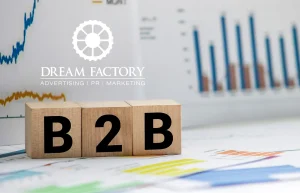Forbrukslån vs. Credit Cards

Banks manage their clients’ funds and thus make a profit. These institutions use the money from the deposits and savings and pay interest. On the other hand, one of their priority jobs is lending money. In this way, banks regain paid fees and earn.
So, if you are considering borrowing from banks, know that they don’t lend you their money but legitimately use other people’s funds (for which they pay interest). Various financial agreements are available to you, depending on your needs and financial abilities. For example, credit cards or short-term personal loans (forbrukslån) might be your options if you need money for some running costs and it is not a large amount.
What Are Credit Cards?
A credit card is a form of financing that enables you to make purchases from merchants. It replaces actual money. You pay for the purchases with the debt accumulated on the card. Banks and card companies issue this financial tool, and it can be of great help for both everyday expenses and large purchases.
Most issuers offer a 0% promotional interest rate for a certain period. It means you can make purchases on 0% interest until the due date. Also, you must make at least the minimum monthly payment, or your bank will begin charging you interest.
It’s important to understand all fees before applying for this piece of plastic. Always read the fine print, as there can be hidden costs explained. Some cards also charge an annual or maintenance fee, which should be clearly stated in your agreement. Also, you must pay off your balance (it should be within your limit) and interest every month.
What Are Personal Loans?
Personal loans represent a lump sum of money you get and agree to repay in installments over a specified period. These arrangements can be good for budgeting since you know exactly how much you owe before signing anything.
With good financial standings and credit history, you have more options since most lenders can offer customized deals. That’s how you can apply for a car, student, or cash loan. But you can lurk the most favorable deals only if you are an applicant with excellent credit history. Don’t expect these if you have a low credit score or high DTI.
After you get the money from a lender, you should adhere to the repayment plan. That can help you build your good credit and get rid of this obligation with no problem. But if you fail to do so, you can face the consequences. For example, if you get a secured loan and pledge your car as collateral, missed or late payments can lead to vehicle repossession.
Interest Rates
In general, credit cards are the most unfavorable way of borrowing money. Personal loans, even short-term ones, charge much lower interest. Even people with poor finances may qualify for these loans, but they can expect higher rates. But in general, loan expenses are lower and more predictable.
Credit card rates can go up to 30%. Plus, they can charge you an extra fee whether you reach your limit or not use enough of it. Also, the amount you must pay each month will vary. With personal loans, you know your monthly installment. If you agree on fixed interest, it won’t change during the loan’s lifetime.
Both cards and loans are a good option for large purchases. But due to higher interest rates, credit cards are not recommended for major purchases. They come in handy for daily expenses, providing you keep the utilization rate low. But buying a new TV or a smartphone with a personal loan means lower monthly payments.
How These Financial Tools Work
Credit cards offer a revolving spending limit, which renews every month. That gives you access to a revolving fund and can be used to borrow money repeatedly as long as you stay within your limit. This limit is usually a bit higher than your salary or monthly income.
Personal loans are obtained in a lump sum which can be many times higher than your income. You get all the cash you’ve asked for at once, and you’re free to spend it as you want. Lenders usually don’t mind your reasons for borrowing money as long as you pay your debts on time.
You should repay your balance monthly or at least make the minimum payment to avoid high interest and penalties. As for a loan, you repay it in installments (principal plus interest). These are calculated based on your income, current debts, and DTI.
Repayment Terms
Plastic money provides revolving lines of credit and variable interest rates, which means that payments will fluctuate. On the other hand, a personal loan will have a fixed interest rate and repayment terms that allow you to budget and plan your finances. That will save more money in the long run. Also, it will make it easier to manage your finances.
Loans are also often paid back over a longer period, making them more convenient for larger expenses. You must settle your card balance every month, or you risk high penalties and losing the ability to use credit cards in the future. This balance can be unpredictable, meaning you can end up in debt if you’re not careful with your spending.
Ease of Applying
Personal loans require monthly repayment and generally have lower interest rates than credit cards. On the other hand, credit cards give you ongoing access to funds and only charge interest when you are late with payments. Both tools are available through many banks and credit unions, and you can even apply online.
It seems that personal loans are easier to apply for, as you can get one of these even if your credit score is not perfect. In general, ease of approval for both cards and loans depends on your credit score. It will have a big impact on the interest rate and repayment terms.
While personal loans don’t have an instant approval process, some lenders can provide a decision the same day. Some even disburse funds on the same day, in cash, via wire transfer, or paycheck. As for credit cards, you can get approval and rejection soon after your application. Still, it may take a few days to get an actual piece of plastic you can use in stores and for online payments.
Personal loans are a fast and convenient method for people to get extra cash, just like credit cards. But the difference between these two financial tools and their costs is significant. Knowing these can help you decide which financial tool might suit you best.





